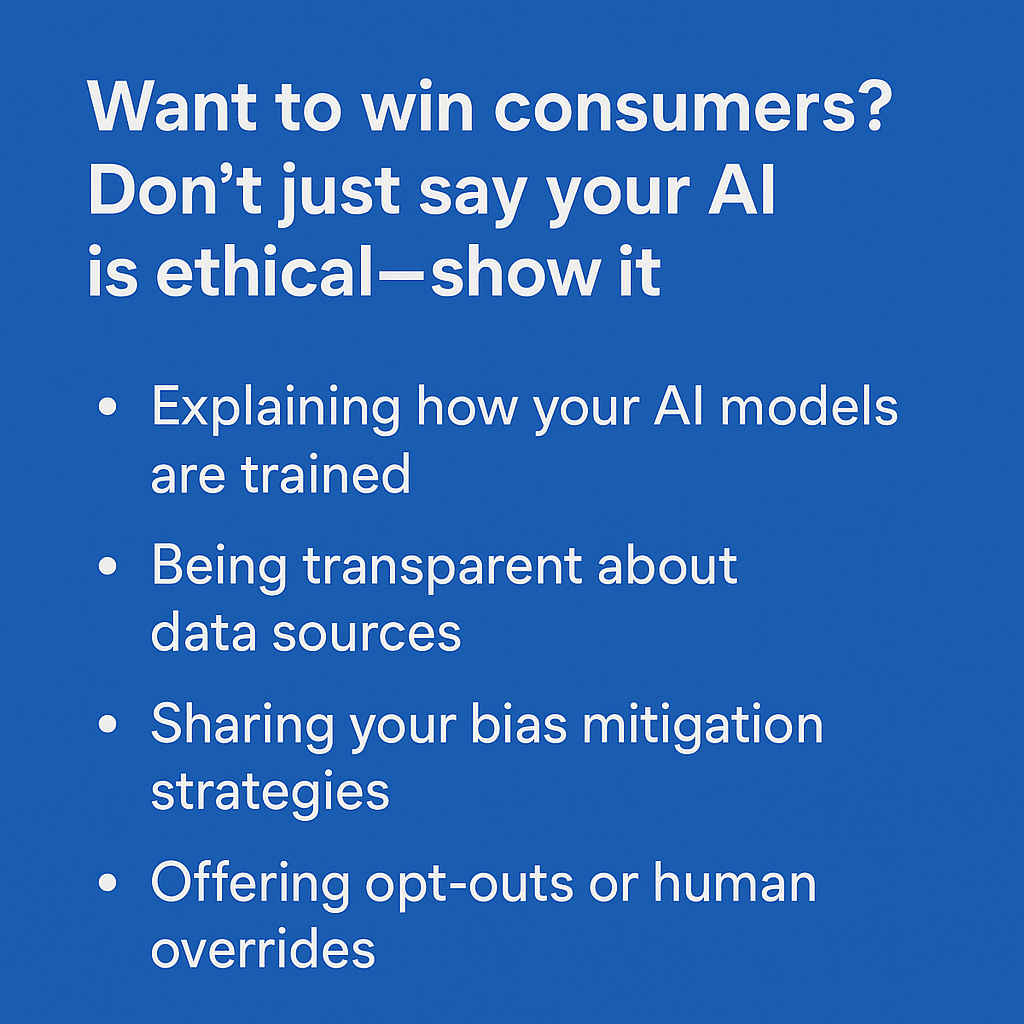
Why AI Transparency is the New Competitive Advantage
Do you recall a time when price tags, catchy slogans, or even a complimentary tote bag were used to foster brand loyalty? Today’s consumers are swiping right to something else entirely: trust. In a world where algorithms make more decisions than humans, AI transparency has become the new currency of credibility—and it’s reshaping the market.
Consider this: a silent algorithm is at work whenever an app suggests your next binge-watch, filters your feed, or assigns your credit. But here’s the catch—most people don’t know how it works. That mystery is no longer cool. It’s causing anxiety. And smart brands are realizing that cracking open the black box might just be their boldest business move yet.
Welcome to the era where ethical AI isn’t just a checkbox; it’s a bold brand statement.
Cracking the Black Box: Why brands must explain their AI
AI is everywhere—from the TikTok videos you binge to the loan approval you anxiously await. The worst part is that most individuals don’t understand how these systems operate or why they come to the conclusions that they do.
That’s the problem.
Consumers and regulators alike are asking, “What data trained this model?”, “Who coded the ethics into this algorithm?”, and most importantly, “What’s being done to ensure fairness?” If your brand can’t answer those questions, you risk becoming part of the growing AI trust gap.
Companies that proactively peel back the curtain and show how their AI operates are earning something money can’t buy: loyalty.
AI transparency isn’t optional anymore
In year 2021, Amazon faced public scrutiny when its recommendation engine began promoting products with misleading health claims—insinuating cures or preventive benefits without scientific backing. Their main error? allowing deceptive listings to proliferate unchallenged by neglecting to monitor or explain the algorithmic reasoning behind these recommendations.
Consumers didn’t just abandon their carts—they abandoned the brand.
Meanwhile, forward-thinking companies like Salesforce are embracing AI transparency head-on. Through their “Trust Layer” effort, people may learn more about AI-generated material, identifying synthetic content and providing an explanation of decision-making processes.
It goes beyond simple compliance. That’s clever branding. The message is clear: if your AI can’t be understood, it won’t be trusted.
Consumers want no hidden lies
Let’s talk about Gen Z—the most AI-native generation yet. These digital natives are also the most skeptical. According to the 2024 Edelman Trust Barometer, a striking 79% of people believe companies should clearly explain how they use emerging technologies ethically. That’s not just a legal expectation—it’s a cultural one. What about Gen Z? They’re holding brands accountable, canceling those that hide behind black-box algorithms, or failing to disclose how AI shapes their choices.
Want to win them over? Don’t just say your AI is ethical—show it. That means:
- Explaining how your AI models are trained
- Being transparent about data sources
- Sharing your bias mitigation strategies
- Offering opt-outs or human overrides
In short: turn your AI ethics policy into a content strategy.

Marketing AI transparency = Marketing differentiation
Brands spend millions to stand out in saturated markets. But the clearest path to differentiation may be hiding in plain sight: radical transparency.
When you publish an explainer video that demystifies your recommendation engine or write a blog post about how your chatbot avoids harmful responses, you’re not just being ethical—you’re building brand equity.
Transparency becomes your story. And in the storytelling economy, that’s pure gold.
Think of it like “Fair Trade” for algorithms. When customers know your AI was built responsibly, they’re more likely to support your brand—even pay more for it.
AI ethics can’t be outsourced
Some companies treat AI governance like insurance: buy a third-party audit, post a badge on your site, and call it a day. That’s not going to cut it anymore.
Real transparency requires ownership.
This means involving cross-functional teams—data scientists, ethicists, product leads, marketers, even customer service reps—to ensure ethical AI is baked into the entire user journey.
And guess what? When it’s done right, your customers will feel the difference. Ethical AI shows up in the little things: more inclusive recommendations, fewer creepy ads, better product-fit experiences.
It’s quiet, but powerful.
Regulations are coming—but culture moves faster
With the EU’s AI Act and similar legislation brewing globally, legal compliance around AI transparency is about to get serious. But here’s the twist: by the time a law forces you to disclose, it’s already too late to win hearts.
Culture is the real regulator now.
The brands leading the AI transparency charge aren’t doing it because they have to—they’re doing it because they understand the cultural shift toward accountability, fairness, and digital dignity.
If you’re only acting when it’s required, you’re following. In 2025, that’s a losing strategy.
Case in point: The rise of the “explainable” brand
Let’s take a look at Klarna, the fintech brand that now embeds explainability into its AI-driven credit decisions. They explain to users why they accept or reject it. In addition to lowering customer complaints, this action improved brand perception generally
Or Canva, which launched a transparency portal to explain how its AI design tools work and how data is (and isn’t) used. In addition to gaining the trust of users, their open-door policy has accelerated their growth compared to many of their less transparent competitors.
These are explainable brands. And in an opaque world, they shine brighter. If you want to Future-Proof your brand? Here are 4 creative ways to embed AI transparency into your brand DNA:
- Build an “AI in Use” Dashboard: Give users real-time visibility into what AI is doing behind the scenes—whether it’s curating content, ranking search results, or moderating comments.
- Launch a “Behind the Algorithm” Series: Use blogs, videos, or social to tell the story of how your AI works—what data it uses, what biases you’ve corrected, and how humans stay in the loop.
- Open Source Your AI Ethics Framework: Share your internal policies publicly. Invite feedback. Show you’re not just protecting IP—you’re protecting people.
- Train Your Team, Not Just Your Model: Everyone from marketing to product should understand the principles of ethical AI. Make it a brand-wide mindset, not a tech-only mandate.
Cut to the chase
Transparency in AI is about creating a lasting brand, not just about doing the right thing. Customers will trust your brand’s actions once they understand how your AI thinks. And in 2025, trust is the sharpest edge in the marketplace. So go ahead—pull back the curtain. It’s not just good ethics. It’s a great business.


